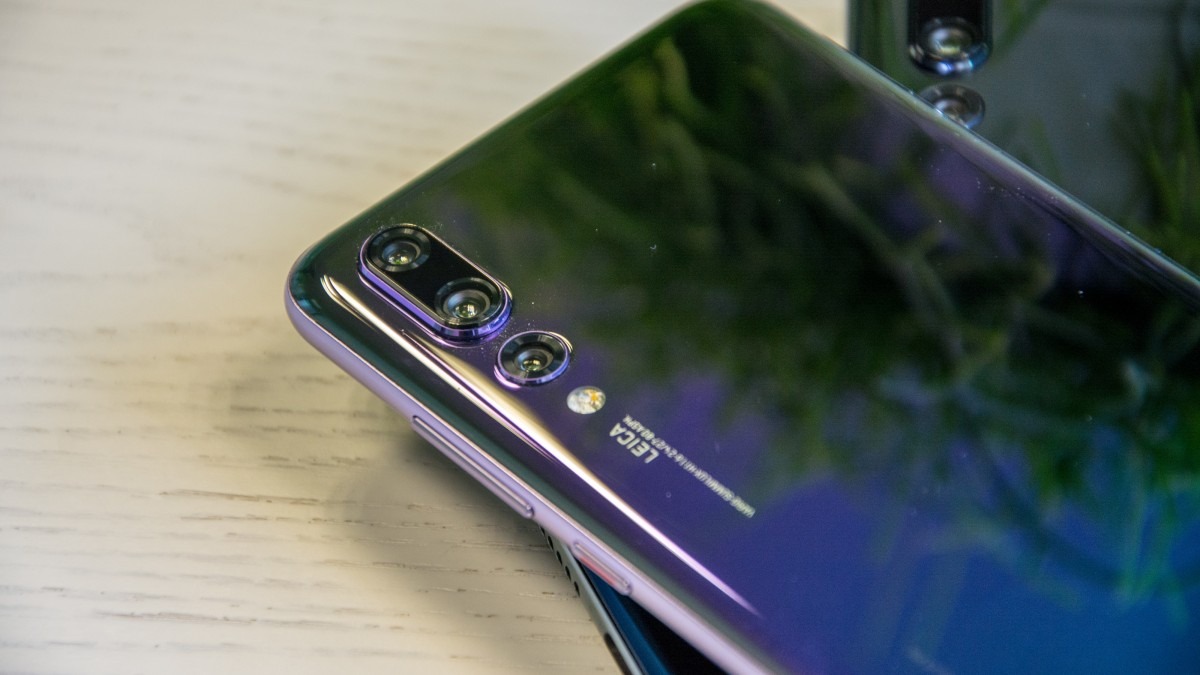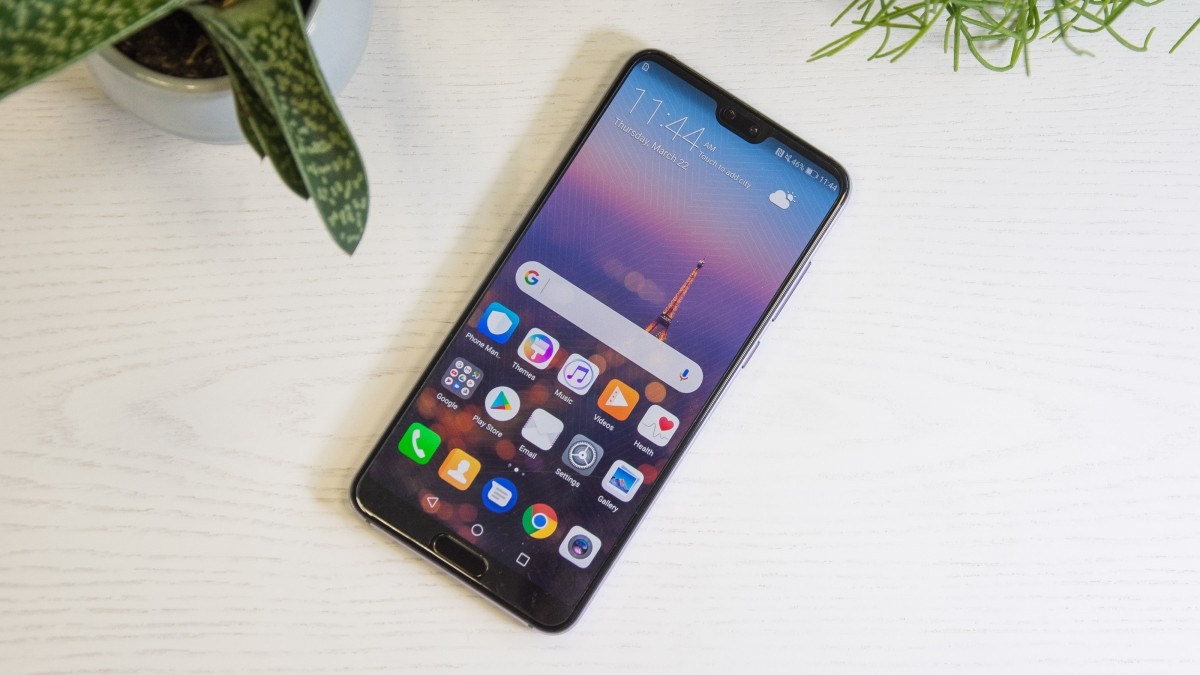There was a time when one camera was enough. Then manufacturers started building two cameras into the phones, to provide zoom, depth effects and other features, and now dual-camera setups are everywhere, even on budget smartphones. So it was perhaps inevitable that someone would decide to go one further and add a third. That’s where we’re at with the Huawei P20 Pro, a phone with not one, not two, but three rear cameras.
I’ll get onto how this configuration works later on in the review (I’ll give you a clue – it’s complicated) but the headline is the megapixel count, which at 40 megapixels means this is the highest-resolution camera seen on a smartphone since the Nokia Lumia 1020, and that’s something to celebrate.
Huawei P20 Pro review: Specifications, price and release date
- 6.1in 1,080 x 2,440 OLED display with notch
- 2.4GHz Octa-core HiSilicon Kirin 970 processor
- 6GB RAM
- 128GB storage
- Triple Leica rear camera array: 40MP RGB (27mm equivalent), 20MP f/1.6 mono, 8MP f/2.4 telephoto (80mm equivalent)
- 24MP f/2 front camera
- 4,000mAh battery
- Price: £788 (899 Euros); from £39/mth from EE with a free pair of Bose QuietComfort 35 II for pre-orders between 28 March and 5 April
- Release date: Available now
Huawei P20 Pro review: Design, key features and first impressions
As for everything other than the camera, the Huawei P20 is a continuation of what made the Mate 10 Pro so great last year. The P20 Pro (and its smaller sibling, the P20) is achingly attractive, clad in softly curvaceous glass at the front and the rear, and comes in some enticing, jewellery-shop colours.

The most eye-catching is the “gradient twilight” version, which fades from deep purple to emerald green across the rear panel, but there’s also a selection of more boring, less garish colours available, including “midnight blue”, black and “pink gold”.
As you’d expect of a modern flagship, the Huawei P20 Pro is a respectable 7.8mm thin and packs a large 6.1in display into a comparatively compact chassis. Even better, it uses an OLED panel, so contrast is effectively perfect and the resolution is 1,080 x 2,440, delivering a long-tall aspect ratio of 18.7:9 without overdoing the pixel count.
More controversially and – in a move that’s likely to become increasingly common throughout the course of 2018 and beyond – the P20 Pro has a notch.

Yep, just like the much-maligned iPhone X, there’s a small black panel eating into the top portion of the display on the Huawei P20, which houses the phone’s earpiece speaker and the front-facing camera. The good news is that it’s around a third the size of the iPhone’s notch; the bad news is that at the bottom of the phone is an honest-to-goodness old-fashioned bezel complete with front-mounted fingerprint reader.
This is bizarre. At least on the iPhone X you get a screen that, aside from the notch, fills the entire screen to the bottom and the sides of the phone. Here, we have the screen filling the front of the P20 Pro to the top and the sides but not the bottom. Why no notch for the fingerprint reader? In fact, why not put the fingerprint reader at the rear? There’s a rear fingerprint reader on the Huawei Mate 10 Pro, so why not do the same here?

Odd design decisions aside, the Huawei P20 Pro is the firm’s most attractive, well-designed smartphone I’ve yet come across. It’s nicer than the Huawei Mate 10 Pro, which is some going, and it covers most of the bases elsewhere.
Inside is a high-capacity 4,000mAh battery, and the phone is IP67 dust- and water-resistant. It uses the firm’s own HiSilicon Kirin 970 CPU with 6GB of RAM and has 128GB storage, all of which (if the Mate 10 Pro’s results are anything to go by) should deliver a solid set of performance figures. Slightly worryingly, there’s no microSD card expansion this time, although with 128GB of internal storage you probably won’t need it anyway.
Huawei P20 Pro review: Porsche Design Mate RS
There’s also, incidentally, a Porsche Design version of the Huawei P20 Pro, dubbed the Porsche Design Mate RS. Despite the different name, the Mate RS is the P20 Pro in everything but name, price (this thing is sure to be excoriatingly expensive) and a couple of small design tweaks.
It has the same triple camera array just in the centre of the phone rather than the corner, the fingerprint reader is moved to the rear and it comes with a huge 512GB of internal storage. Perhaps the most interesting feature on the Porsche Design Mate RS, though, is that it has an in-screen fingerprint reader as well as a regular rear-mounted one.
Huawei P20 Pro review: Triple camera
The Huawei P20’s star feature isn’t the notch, though, or even the design, but the triple Leica camera array I mentioned in the introduction. Before I get into how these all work together, let me first run you through the specifications:
- First camera: 40-megapixel (RGB), f/1.8, 27mm wide-angle (35mm equivalent)
- Second camera: 20-megapixel (monochrome), f/1.6
- Third camera: 8-megapixel (RGB), f/2.4, 80mm telephoto (35mm equivalent)
All use Huawei’s “4-in-1” combination of laser, dual-pixel phase-detect, depth and contrast autofocus. Sensitivity can reach a frankly ridiculous ISO 102,400; there’s a dedicated colour temperature sensor for setting white balance more accurately; and the camera also has the ability to shoot slow-motion video at 960fps in 720p resolution.
Look impressive, doesn’t it? Well, that’s not all, because Huawei is also extending the camera software’s “AI” capabilities. AI video stabilisation aims to intelligently predict and anticipate movement with the result that you should be able to handhold shots with exposures up to four seconds long without the need for a tripod.

There’s also “AI assisted composition” to help you keep horizons level and get everyone in shot when taking pictures of groups. There are six additional AI-recognised scene types over the Huawei Mate 10 Pro (bringing the total to 19) and, to complement all this, you get an f/2 24-megapixel camera on the front.
That’s a total of 92 megapixels in all. Blimey.
And I haven’t got onto the biggest headline of all yet, either: the 40-megapixel resolution on the main RGB camera. This is the highest resolution seen in a smartphone since the Nokia Lumia 1020, and it should make for some eye-popping detail capture. It certainly puts the Huawei P20 Pro out in front of every other smartphone currently available, including the Samsung Galaxy S9 Plus and the Apple iPhone X.
As for how the three cameras work together, that’s not as complex (or as interesting) as it at first appears. Essentially, what you have here is a similar mono/colour arrangement to the Huawei Mate 10 Pro and the Huawei P10 but with a telephoto camera bolted on.

It’s not all that different, in that respect, to the Samsung Galaxy S9+ or the Apple iPhone 8 Plus. You get a regular camera and a zoom that gets you closer to your subject images with little or no loss in quality.
With such a comparatively low-resolution telephoto camera, it remains to be seen how good those zoomed-in shots will be. From the brief hands-on tests we’ve don so far, it seems to offer sharper results than the Apple iPhone X, although in video I noticed that the zoom action wasn’t particularly smooth.

Huawei P20 Pro review: Early verdict
Overall, the Huawei P20 Pro looks a bit of a mixed bag. Inside, not much has changed over the Huawei Mate 10 Pro, which has now dropped in price to a smidge over £500, and the fact there’s no microSD card expansion is a bit of a disappointment.
But this is a phone that’s every bit as good looking as the Samsung Galaxy S9+, with a camera array that’s capable of producing far higher-resolution images, matches its super slow-motion capture and has an interesting array of “AI” capabilities, too.
Time will tell whether the P20 Pro’s triple camera is all it’s cracked up to be, whether it works as well in low light or whether it makes as good a video camera as the S9+ or the iPhone 8 Plus/X. One thing is sure, though: the Huawei P20 Pro is shaping up to be the most interesting smartphone of the year so far.
Source: alphr.com





































